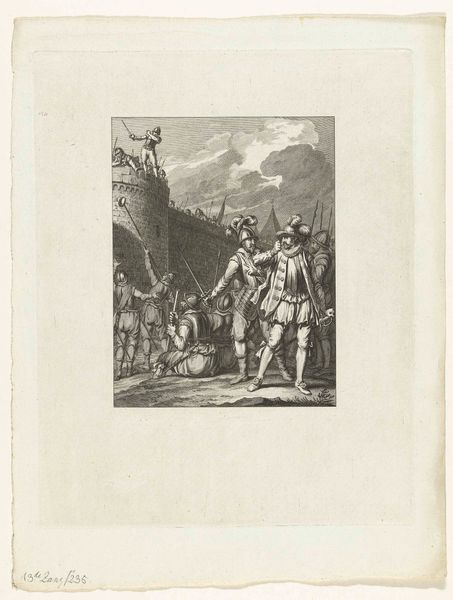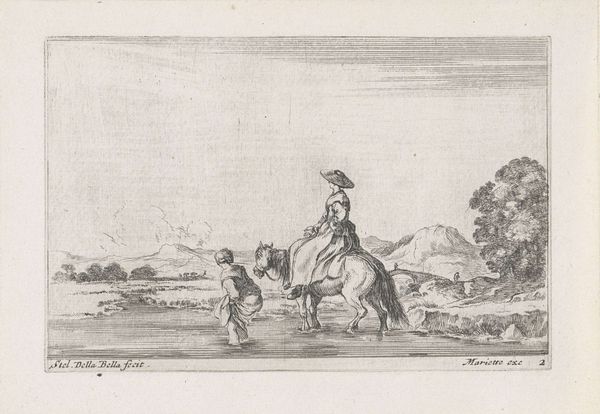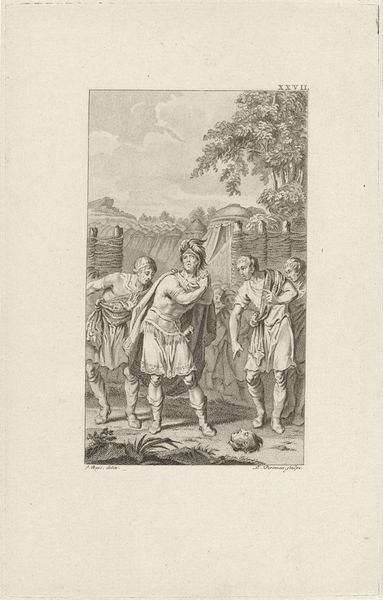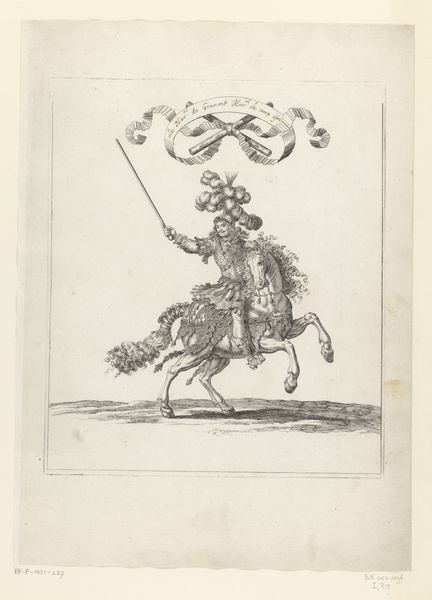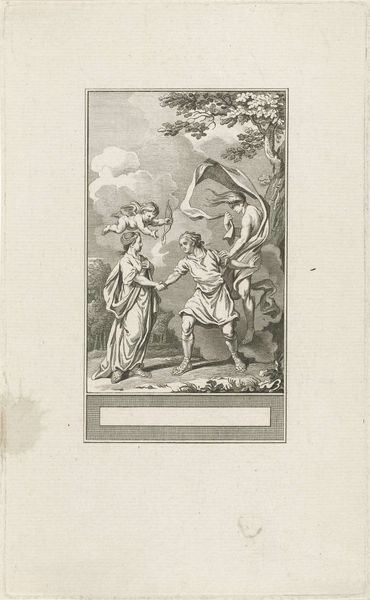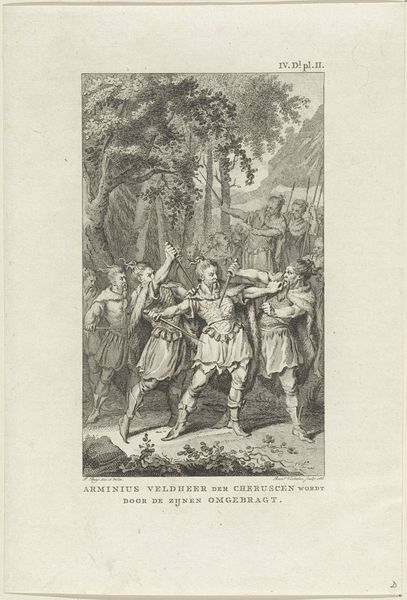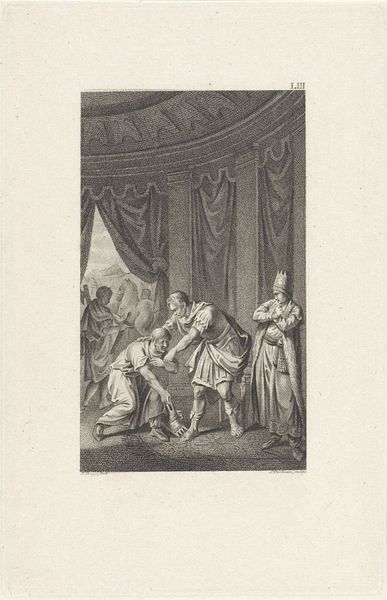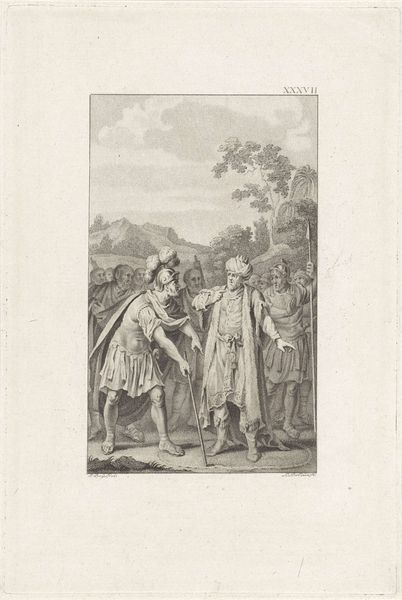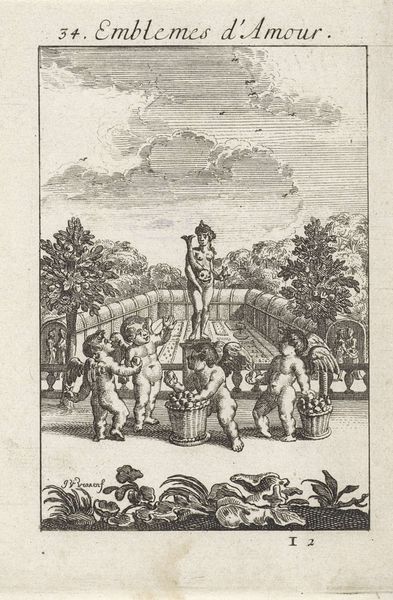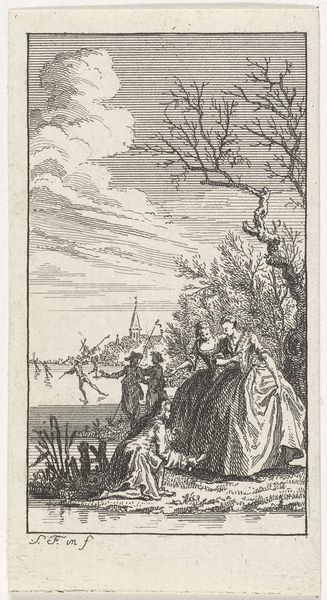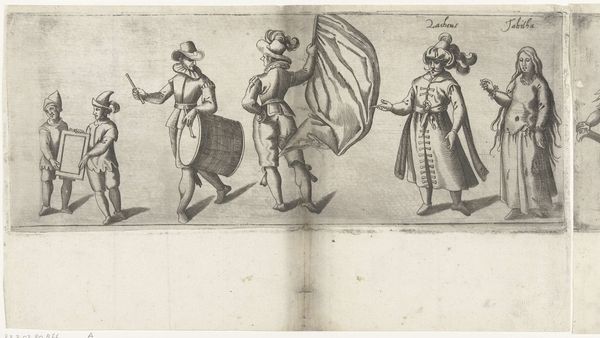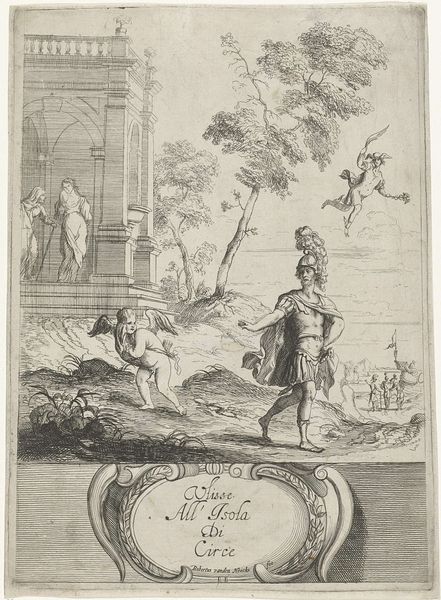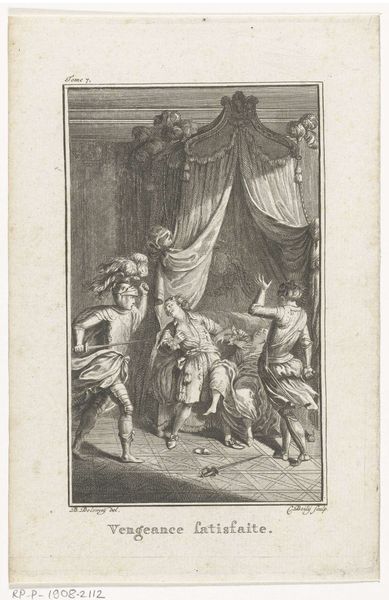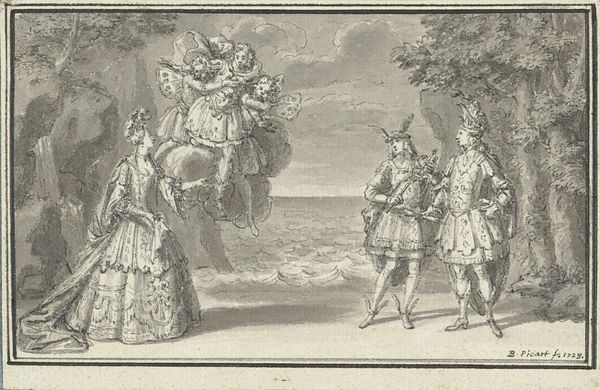
#
pencil drawn
#
aged paper
#
light pencil work
#
pencil sketch
#
old engraving style
#
sketch book
#
personal sketchbook
#
sketchbook drawing
#
pencil work
#
sketchbook art
Dimensions: height 219 mm, width 129 mm
Copyright: Rijks Museum: Open Domain
Editor: This is “Duel tussen de Horatii en Curiatii,” a pencil drawing made in 1793 by Ludwig Gottlieb Portman, now at the Rijksmuseum. I find it interesting that it looks so much like an engraving; given the "old engraving style" quality, I'm curious, what do you make of this piece, especially considering the medium? Curator: Well, consider the socio-economic factors at play here. Portman uses pencil, a relatively accessible material even then. But he meticulously imitates the aesthetic of engravings. Why? To democratize art? To cater to a market that valued the perceived prestige of engraving while operating on a budget? Editor: That's a good point. So the material itself has a story to tell about access and class, even though the image itself depicts this historical battle scene. Curator: Exactly. The "sketchbook art" designation suggests a certain informality, a working process. But then the dedication, time, and craft, pushes against the seeming sketch aesthetic. Do you think that this piece challenges, even inadvertently, the traditional hierarchy between high art and "craft"? Editor: Absolutely, focusing on the material really complicates the picture. It isn't just about portraying the classical story, it's also about who had access to what kinds of representation, and the social value attached to those means of production. It speaks to consumption of imagery too, as it creates value by approximating what might otherwise be more exclusive! Curator: Right, and consider the aged paper, or lack of heavy embellishment: Portman may not have thought the work to be finalized. The artmaking suggests many different avenues of accessibility at the same time as social stratifications. Editor: That’s given me a lot to think about. I definitely didn't see all those layers just looking at it initially. Curator: Indeed, looking closely at the materials used and the making process can really illuminate broader cultural meanings and challenges about what we value.
Comments
No comments
Be the first to comment and join the conversation on the ultimate creative platform.
